IoT medical apps are bringing about a quiet revolution in healthcare. The idea of always-on access to patients’ vitals regardless of their whereabouts makes value-based medicine a reality.
But how do you build a healthcare IoT app that patients and doctors embrace, and that effectively changes traditional in-person diagnosis and treatment practices?
We’re here to answer these and other questions about developing an IoT app for healthcare.
Table of contents:
1. What is a healthcare IoT app?
2. The backbone of an IoT medical app
3. Consumer-facing health IoT app
- Power consumption optimization
- Integrations with health kits on mobile platforms
- Firmware sync
- Security
- Artificial Intelligence
5. Our expertise in developing healthcare IoT apps
What is a healthcare IoT app?
As with many types of mobile apps, an IoT medical app is more than a mere mobile app on a smartphone screen. It’s a whole system that consists of a consumer-facing mobile app, a sensor or other smart things, and a web application for providers.
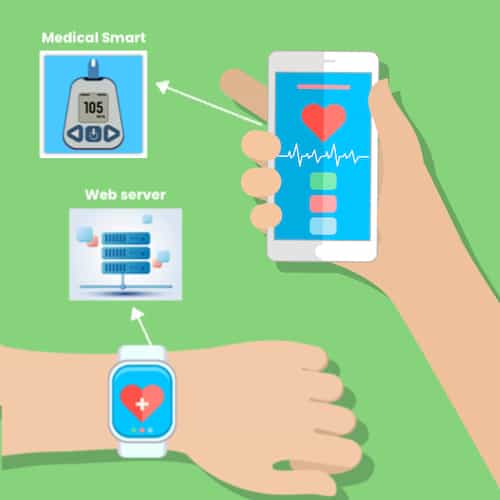 A classic example of an IoT medical app is an app that reminds patients to take medicine. How does it usually work?
A classic example of an IoT medical app is an app that reminds patients to take medicine. How does it usually work?
An app is connected to a smart pillbox and knows when a patient has skipped or taken a dosage. The app also notifies the patient when it’s time for their medicine. Finally, the doctor gets a text saying the patient has missed a medicine intake, and the patient record is updated in the EHR software.
Does it mean that a healthcare IoT app can send messages on your behalf and update a clinic’s EHR system?
The reality is the app connects not only to a smart pillbox but also to a web application. The web app receives data from the IoT app and then proceeds with the rest:
- sends a text (or notification) to the doctor
- updates the patient record in EHR
- silently reports back to the IoT app that it’s completed these actions
- runs AI algorithms to identify trends in treatment
That’s precisely why a health IoT app is more than just a smartphone app.
The backbone of an IoT medical app
As you can see, a web application that connects a healthcare IoT app with doctors is crucial. An IoT app becomes very limited without a web layer, leaving patients tet-a-tet with interpreting their data.
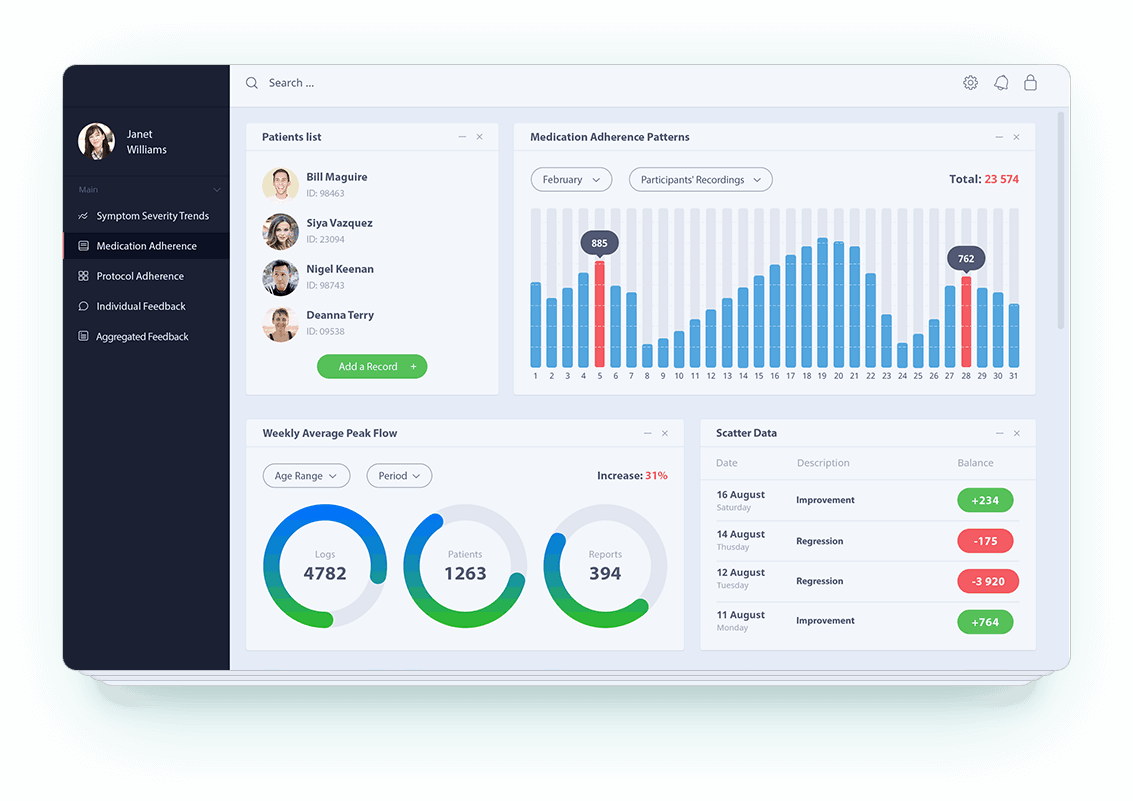 Let’s see what options you have for developing the web application layer of a full-blown IoT medical app.
Let’s see what options you have for developing the web application layer of a full-blown IoT medical app.
The big trio of cloud providers
Amazon Web Services, Google, and Microsoft offer their own versions of the IoT cloud, deeply integrated with their infrastructure. AWS IoT Core, Google Cloud IoT, and Azure IoT Hub allow IoT developers to quickly set up connectivity between smart devices and a cloud application.
The platforms take care of end-to-end security, device management, high-frequency and low-latency communication, and many other aspects of typical IoT backend operations.
Besides, these tools can help you brush up noisy data coming from endpoints and make it digestible by using built-in analytics tools.
Open-source IoT platforms
If you don’t want to lock into a particular vendor, there’re open-source alternatives, ranging from full-fledged IoT backends like Thinger.io or Mainflux to API-driven solutions (Zetta). These open-source IoT platforms provide:

- container-based deployment
- live data streaming
- support for Docker and Kubernetes
- support for various protocols, e.g., HTTP, MQTT, WebSocket
Regardless of your choice of an IoT backbone platform, you’ll need to make sure that the platform supports the hardware you’re going to use, which may, in turn, depend on firmware.
Plus, you need to plan for the platform’s future scalability and set up an architecture that’s optimized for growth.
Consumer-facing health IoT app
The mobile IoT app is naturally the largest piece of any IoT healthcare project. It allows the consumer — either a patient or a healthcare professional — to control smart devices, review aggregated data, and take action.
 Power consumption optimization
Power consumption optimization
Medical IoT apps need to regularly read data from sensors. So it’s easy to imagine such an app draining your phone battery completely pretty fast. That’s why you should consider using special communication protocols that are optimized for low power consumption:
- BLE (range: up to 330 ft)
- Z-Wave (range: up to 330 ft)
- Zigbee (range: up to 66 ft)
Related Article: How to Develop a BLE App
Integrations with health kits on mobile platforms
 Like any healthcare app development, an IoT health app should naturally connect to HealthKit, Google Fit, or Samsung Health, depending on where it runs. That’s where the app can get additional health info necessary for, let’s say, running AI-powered diagnosing algorithms.
Like any healthcare app development, an IoT health app should naturally connect to HealthKit, Google Fit, or Samsung Health, depending on where it runs. That’s where the app can get additional health info necessary for, let’s say, running AI-powered diagnosing algorithms.
And if your custom developed mobile app is targeting the Apple ecosystem, always remember you can make use of ResearchKit and CareKit. These tools can help if your app is focused on research.
Firmware sync
When an IoT app is talking to a medical device, e.g., to request heart rate data, it actually interfaces with firmware — special low-level software installed on a sensor.
What we’ve discovered while working on a light therapy IoT app is that it’s crucial to keep the mobile app in sync with the latest firmware installed on the device.
That can be a challenge if the mobile app and firmware are being developed simultaneously by (often) separate teams.
Security
It goes without saying that healthcare IoT applications need to feature the latest security advancements because patient data is at stake. IoT apps naturally work with PHI and therefore need to comply with the HIPAA rules, especially those around HIPAA compliant video conferencing and messaging.
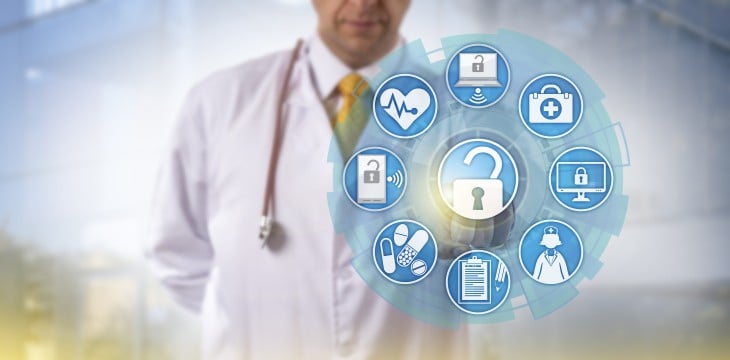 In addition, such solutions have to adhere to such standards as IEC 62304, ISO27001, SOC2 Type 2, and a few others.
In addition, such solutions have to adhere to such standards as IEC 62304, ISO27001, SOC2 Type 2, and a few others.
Artificial Intelligence
Smart sensors can generate a lot of data: from steps to heart rate to glucose levels to blood pressure, cholesterol readings, etc. To make sense of all that data, companies often revert to AI and machine learning technologies that help healthcare specialists spot anomalies in advance.
We recommend running such AI operations on the web because mobile computing power may be insufficient. Besides, edge-computing usually suggests using advanced, powerful sensors that are not always applicable in healthcare products.
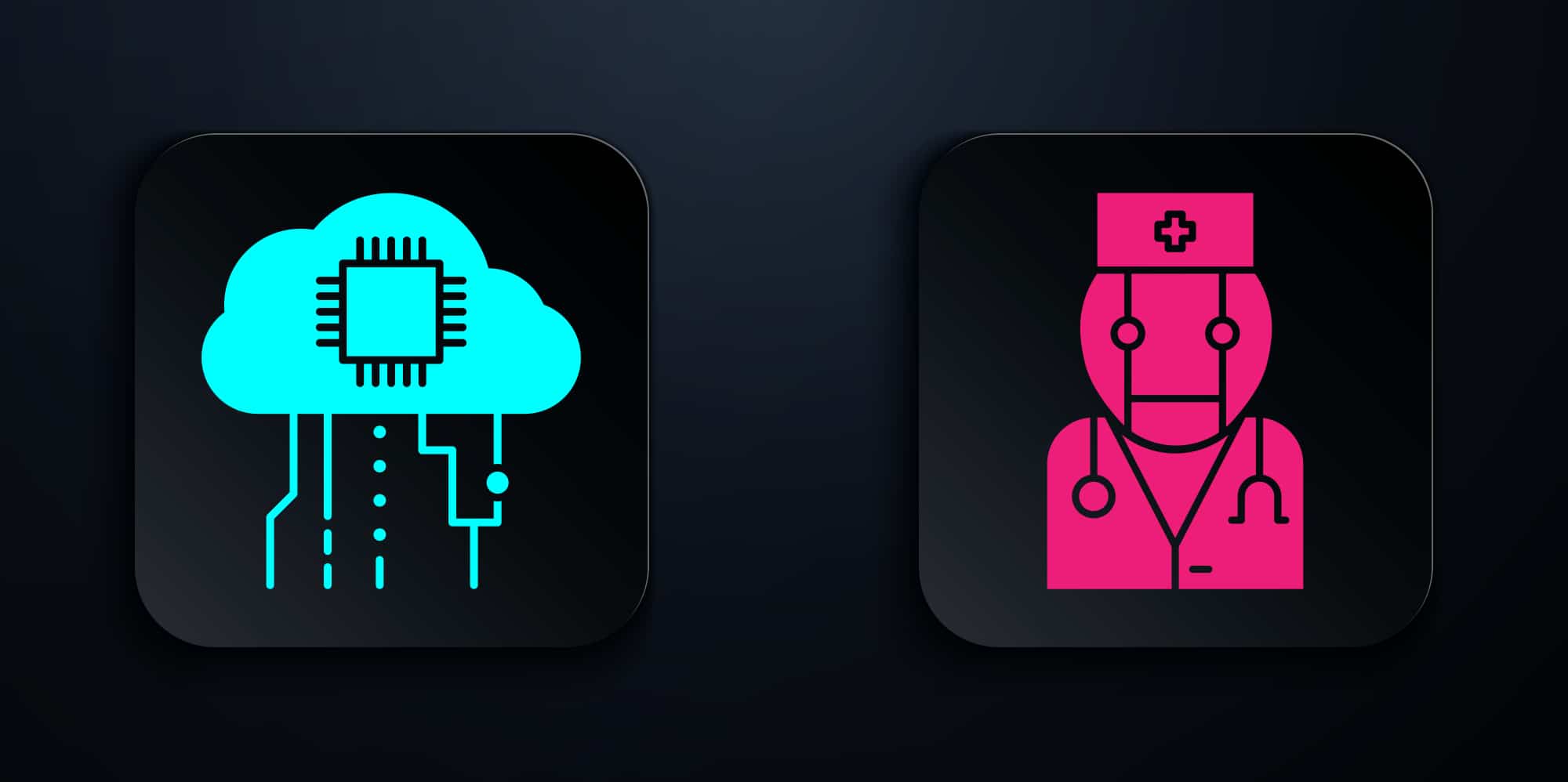
Types of medical IoT apps
If you think of it, all healthcare IoT apps can be roughly divided into two groups, depending on who’s the end-user:
- patient-focused IoT applications
- IoT solutions for healthcare staff
Patient-focused IoT apps comprise the majority of all IoT products we’ve built at Topflight Apps. They normally have to do with tracking vital signs and providing feedback to the user.
A particular sub-niche of such apps also includes an app for doctors where they can monitor a patient’s adherence to the treatment plan and their progress overall.
IoT applications for healthcare staff include asset tracking solutions and personnel tracking. These products usually include some tech for indoor navigation, like Bluetooth beacons, NFC, or RFID tags.
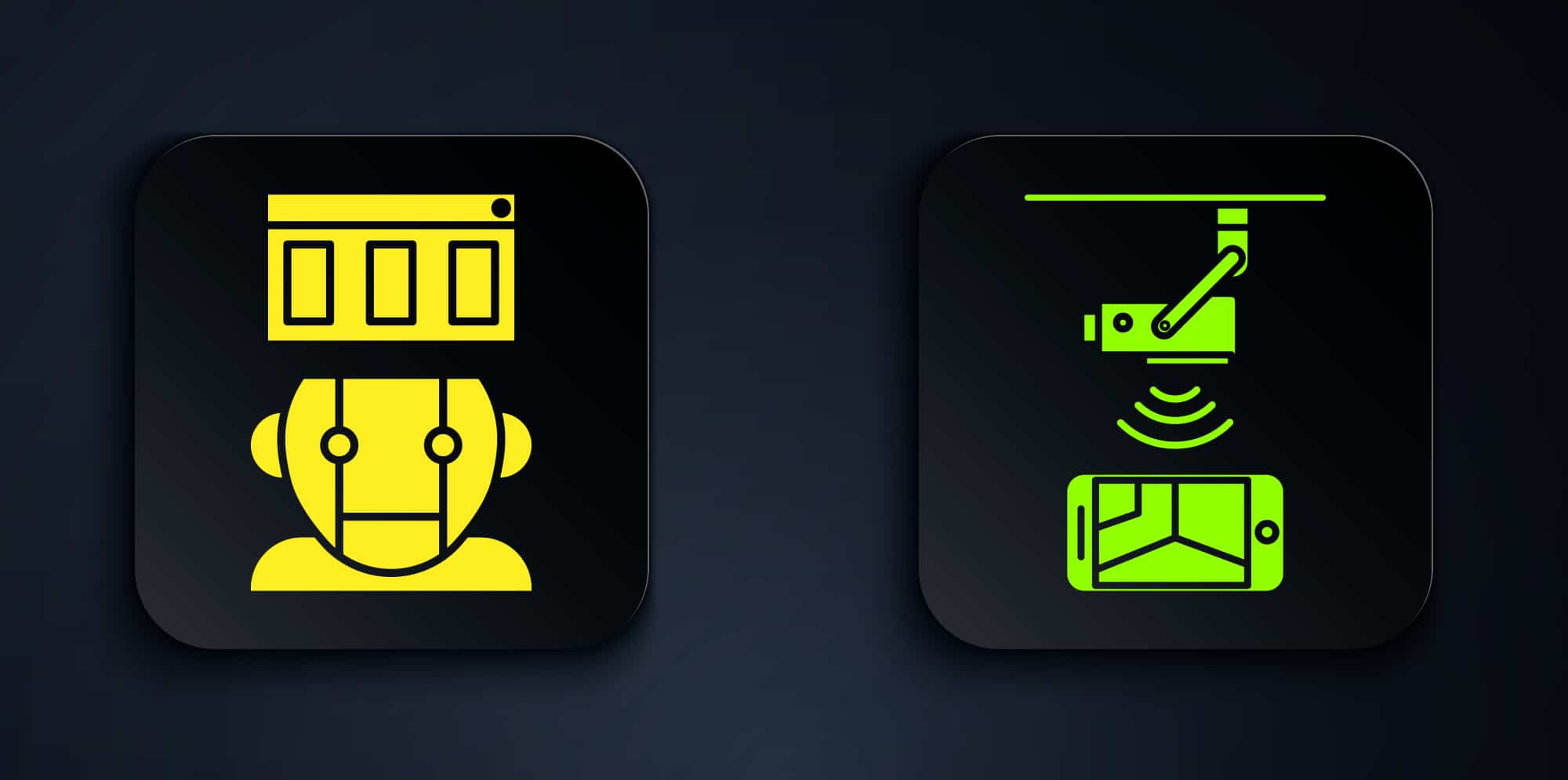 It’s worth noting that IoT apps for tracking medical equipment often don’t need mobile apps altogether. It’s more convenient to work with a map with asset locations through a web application.
It’s worth noting that IoT apps for tracking medical equipment often don’t need mobile apps altogether. It’s more convenient to work with a map with asset locations through a web application.
However, you can easily envision an app that allows users to scan a QR code off an asset and pop a card with detailed info about the item.
Our experience in developing healthcare IoT apps
Over the course of 5 years, we’ve delivered several successful IoT medical applications. I’ll outline a few so you know where we can be of help.
Tygon. Type: customer-facing IoT medical app.
Tygon is a light therapy device with multipurpose functionality: light therapy, UVC sanitizing, blacklight detection, and wireless charging. To make this swiss-army light-therapy device work seamlessly with smartphones, we built iOS and Android apps.
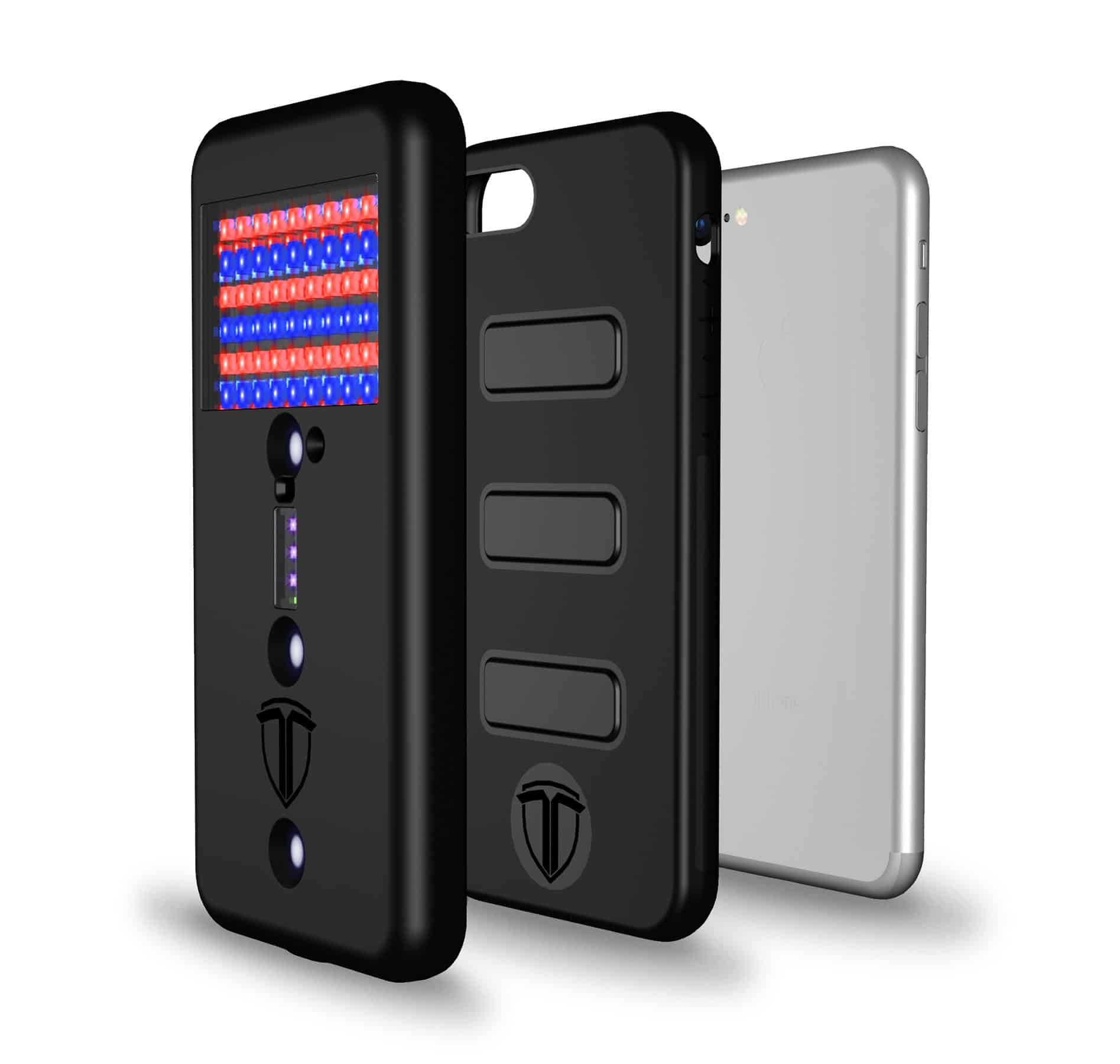 These IoT applications work as a remote control for the gadget, allowing the user to control and guide light therapy for a wide range of skin conditions.
These IoT applications work as a remote control for the gadget, allowing the user to control and guide light therapy for a wide range of skin conditions.
Southwire. Type: IoT app for customers to control surge protection appliances.
Southwire has developed a cutting-edge IoT-connected smart tool that enhances safety and efficiency on the job. We built the companion mobile app that connects to these tools, providing real-time diagnostics, usage data, and troubleshooting insights. This app helps customers monitor their devices seamlessly, improving productivity and accuracy in their work.
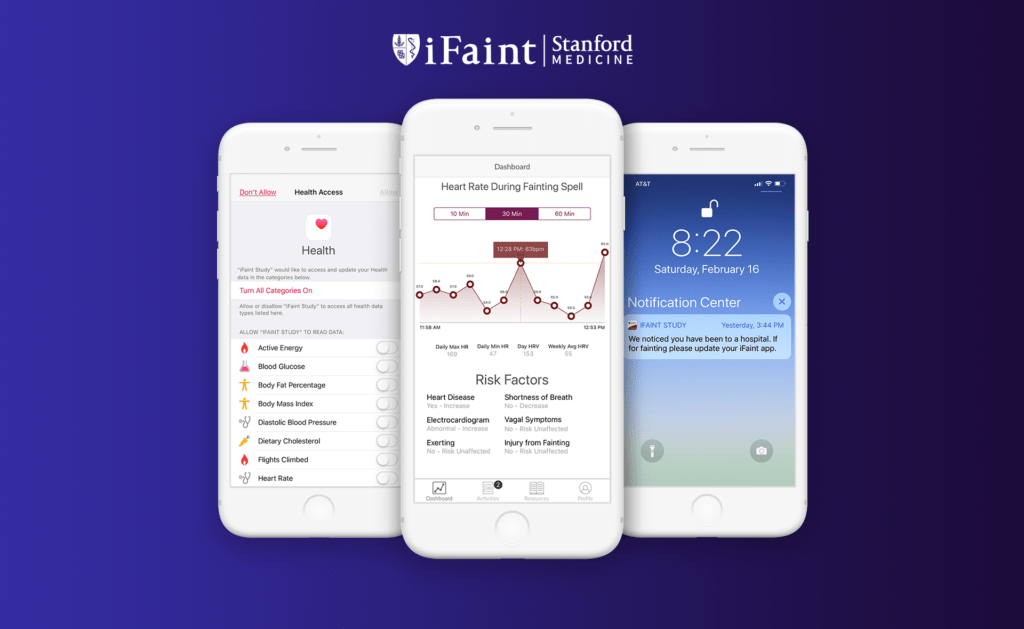
Type: customer-facing IoT app.
Our team assisted the Stanford University School of Medicine with developing a mobile app for a medical study on fainting spells. The app connects to a wearable that tracks the heart rate and visualizes the data and feedback regarding symptoms related to the study.
Related: How to Build a Wearable App
Besides that, the app leverages the geofencing functionality and asks users to provide feedback if they’ve visited a hospital.
We’ve also worked on other IoT products for the healthcare industry, connecting patients and doctors to proprietary glucometers, breath meters, and smart pillboxes.
Feel free to reach out if you have questions about developing a healthcare IoT app for patients and healthcare professionals, whether you’re looking for more information around process, costs of developing an app or just advice on if now is the right time to bring your idea to life.
Related Articles:
- Complete Guide to Developing a Healthcare App
- How to create and build a healthcare startup
- Healthcare Cloud Computing: Use Cases, Best Practices, More
- Building a Remote Patient Monitoring Application: The Complete Guide
- Computer Vision in Healthcare: Big Changes in Healthcare
- Guide to building a HIPAA compliant application
- Blockchain in Healthcare
- How to create a telehealth application
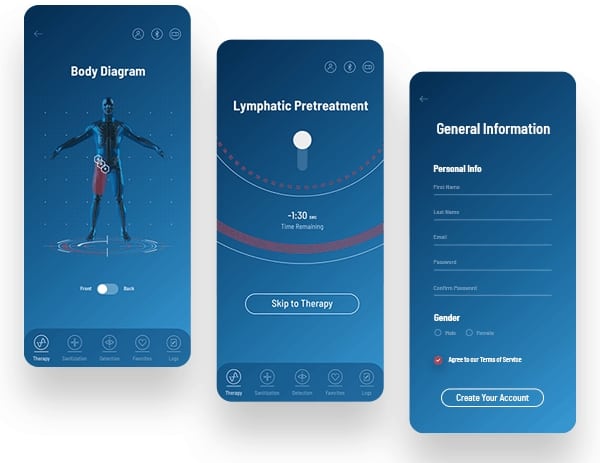 Power consumption optimization
Power consumption optimization